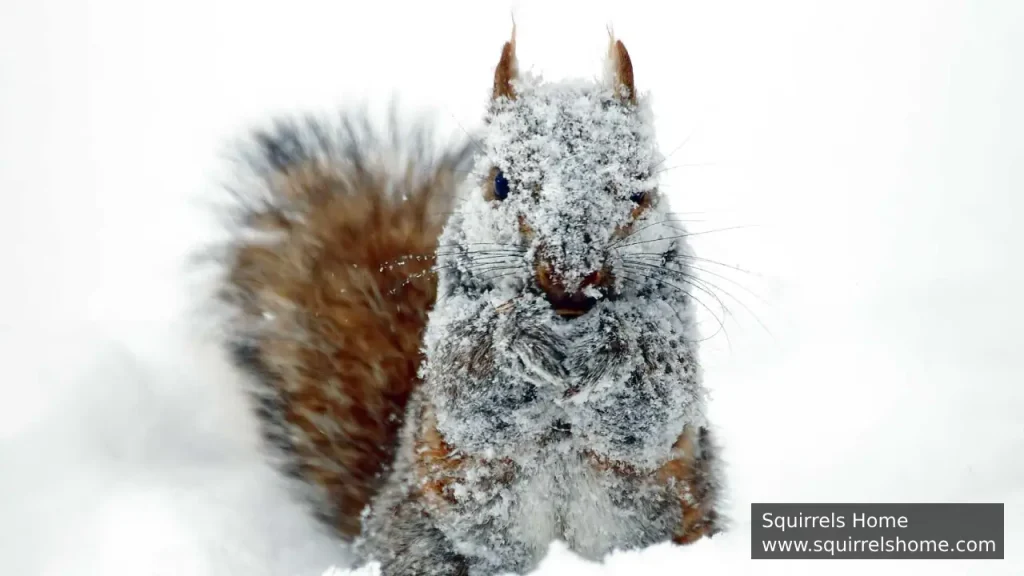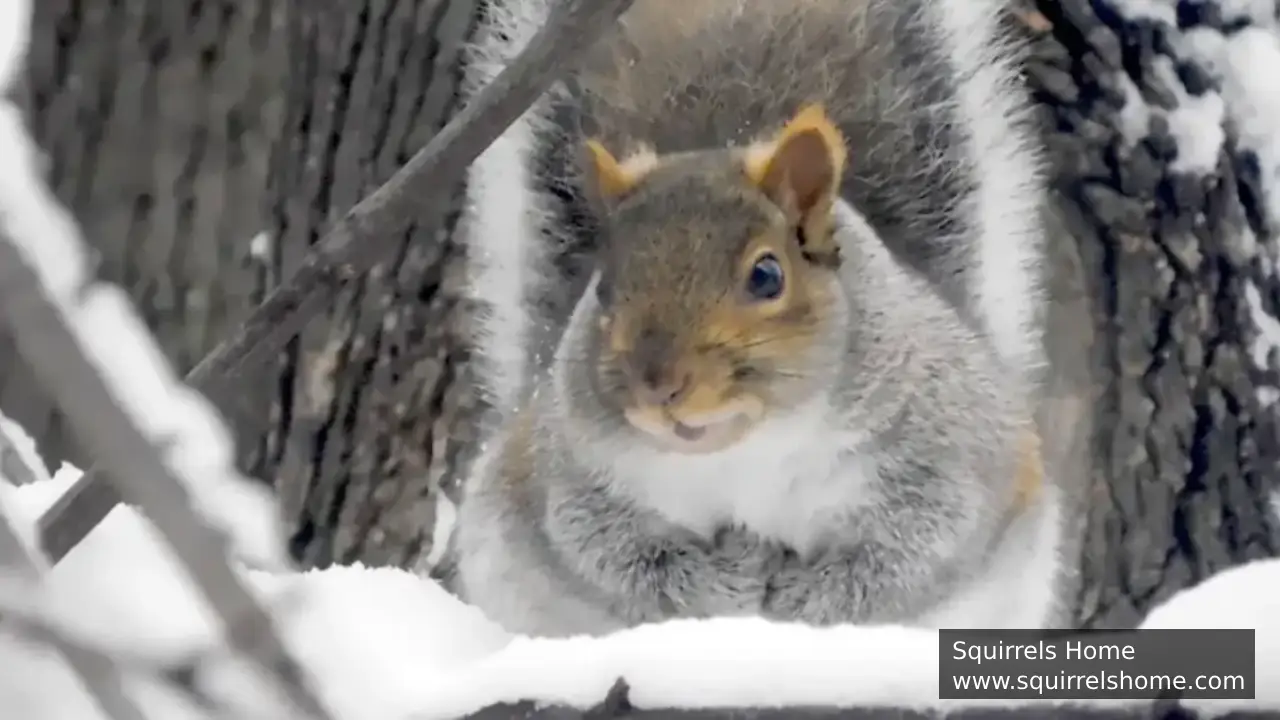Squirrels are small, lively animals found in many parts of the world. Their fur does more than keep them looking cute. It plays an essential role in keeping them comfortable in different temperatures. Let’s explore how a squirrel’s fur helps them stay warm in the cold and cool in the heat.
How Does Squirrel Fur Keep Them Warm in Winter?

In winter, temperatures can get very cold. Squirrels’ fur becomes thicker during this season. This thick fur traps air close to their bodies, creating a layer of warmth. It’s like wearing a fluffy coat that keeps the cold out.
The outer part of their fur, called guard hairs, is long and water-resistant. These hairs protect the squirrel from snow and rain, keeping the inner layers dry. The inner layer, called underfur, is soft and dense. This underfur is what holds in the squirrel’s body heat, preventing it from escaping into the chilly air.
Squirrels also curl up when they sleep, covering their bodies with their tails. Their tails act like blankets, adding an extra layer of warmth and protection against the wind.
How Does Squirrel Fur Help in Hot Weather?

Summer can be very hot, and squirrels need to stay cool to survive. Their fur helps in several ways. Even though it may seem counterintuitive, fur can actually keep squirrels cool by providing shade for their skin.
The lighter color of summer fur reflects sunlight, reducing the amount of heat their bodies absorb. Squirrels also have thinner fur during warm months, which allows heat to escape more easily from their bodies.
Additionally, squirrels’ tails are helpful in hot weather too. They can use their tails to shade themselves from the sun or fan their bodies to cool down.
How Does Fur Protect Squirrels from Other Dangers?
Fur isn’t just about temperature regulation. It also protects squirrels from physical harm. For example, their fur cushions their skin if they fall from trees. This is especially important since squirrels often jump from branch to branch.
Their fur can also act as camouflage. In forests, their brownish-gray fur helps them blend into tree bark, making it harder for predators to spot them. This natural protection allows them to stay safer while foraging for food.
Do All Squirrels Have the Same Type of Fur?
Not all squirrels are the same. Different types of squirrels have different kinds of fur. For example, tree squirrels have bushy tails and soft fur. Ground squirrels often have less fluffy fur since they don’t need as much warmth.
Some squirrels, like those living in colder regions, grow even thicker fur in the winter compared to squirrels in warmer areas. These adaptations help each type of squirrel survive in their unique environment.
How Does a Squirrel’s Fur Change Throughout the Year?
Squirrels’ fur changes with the seasons. During fall, they shed their summer fur and grow a thicker coat for winter. This process, called molting, ensures that their fur is well-suited to the changing weather.
In spring, squirrels shed their winter coat and grow thinner fur for summer. These changes happen naturally, guided by the length of daylight and temperature shifts.
What Happens if a Squirrel Loses Its Fur?
Sometimes, squirrels lose their fur due to illness or parasites. This condition is called mange and can leave patches of skin exposed. Without fur, squirrels have a harder time staying warm in cold weather and are more vulnerable to injuries and predators.

If a squirrel loses its fur, it’s essential for it to recover quickly. A healthy diet and safe environment can help the squirrel grow its fur back faster.
Why Is Fur Important for Baby Squirrels?
Baby squirrels are born without fur. They are completely dependent on their mothers for warmth. Over time, their fur starts to grow, first as a soft layer and later as a thicker coat.
Once their fur fully develops, they can better regulate their body temperature. This allows them to explore their surroundings and become more independent.
Conclusion
A squirrel’s fur is an amazing tool that helps them survive in changing temperatures. Whether it’s keeping warm in the winter, staying cool in the summer, or protecting against dangers, their fur plays a vital role. By adapting to different seasons and environments, squirrels show just how important their fur really is.
FAQs
1. Do squirrels have fur all over their bodies?
Yes, squirrels have fur covering almost all of their bodies, including their tails. This fur provides protection and helps regulate their body temperature.
2. Can squirrels survive without their fur?
While squirrels can survive temporary fur loss, it makes them more vulnerable to colds, injuries, and predators. Recovering their fur is essential for their well-being.
3. How do squirrels clean their fur?
Squirrels groom themselves by licking their fur and using their paws to remove dirt and parasites. This helps keep their fur in good condition.
4. Why do squirrels have different fur colors?
Fur color helps squirrels blend into their surroundings. It can vary depending on the species and the environment where they live.
5. How does a squirrel’s tail fur help them?
The fur on a squirrel’s tail provides warmth, shade, and protection. It acts as a blanket in the cold and a shield against the sun in hot weather.
